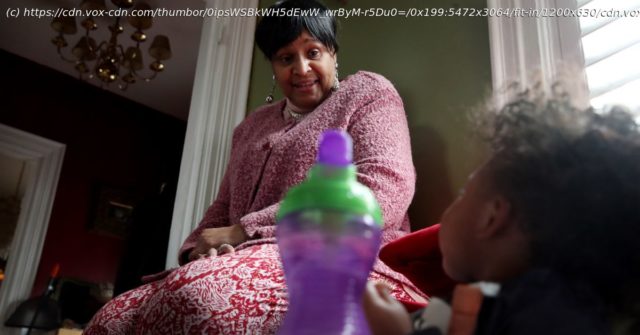America’s child care crisis is getting worse. Here’s how the American Rescue Plan could help.
Deborah Corley Marzett hasn’t missed a day of work since the pandemic started. When supplies like toilet paper and paper towels were scarce, the family child care provider was up before dawn to stand in line at the store. When schools were closed and older children started to come to her for remote learning, she bought new tables and upgraded her internet so they could Zoom into their lessons. When Covid-19 brought new ventilation requirements, she enclosed her porch to build a safe place where kids could play with plenty of airflow. But none of this came cheap. The internet alone costs $100 a month, Marzett told Vox. And getting financial help has been a constant struggle. When she went to apply for a PPP loan, just getting information from the bank was difficult. She did eventually receive a small business loan, but she’s afraid to touch the money: “I can’t afford to pay that loan back,” she said. For in-home providers like her, “for every dime we make, it goes into supporting our homes,” Marzett said. “Our businesses are our homes.” While Marzett has been able to stay open, the pressures of the pandemic — rising costs, coupled with falling enrollment as parents pull children out of care — have caused many businesses like hers to close down. In California, where Marzett lives,2,160 child care providers have closed permanently since the pandemic began, a loss of about a third of all the spots for children in the state, Kim Kruckel, executive director of the California-based Child Care Law Center, told Vox. The same pattern is evident nationwide: An estimated 20,000 day care centers have shuttered across the country since the pandemic began. For those that remain, help is on the horizon, with almost $40 billion set aside for child care in the recently-passed American Rescue Plan. But that money will go through state governments, which still have to distribute the funds equitably and efficiently to hundreds of thousands of very small businesses that often lack bookkeepers or even bank accounts — and that have often been ill-served by government programs in the past. In order to prevent more closures and help providers stretched to the limit by Covid-19, the money has to get out fast. “We don’t need it three, four, five months later,” Marzett said. “We need it now.” The pandemic has shuttered thousands of child care programs and left others in crisis For child care providers in the pandemic, the numbers are grim. In a December survey by the National Association for the Education of Young Children,81 percent of providers said they had lost enrollment over the past year, with an average decline of nearly a third. When Covid-19 began spreading around the country last spring, many child care programs closed temporarily, sometimes losing tuition money in the process. Even when they reopened, some families did not send their children back due to concern about the virus. Meanwhile, many parents — especially Black and Latinx women and parents in low-wage jobs — were laid off in the economic crisis triggered by the pandemic, and could no longer afford to pay for child care. And while enrollment went down, costs went up — 91 percent reported additional expenses for cleaning supplies, and 73 percent said they paid more for PPE. While some states offered help with rent and mortgage payments and other costs,42 percent of providers said they had taken on debt by putting program expenses on their personal credit cards. That combination of less money coming in as children dropped out, and more money spent on the necessities of providing care during a pandemic, has stretched programs’ finances to the breaking point.






